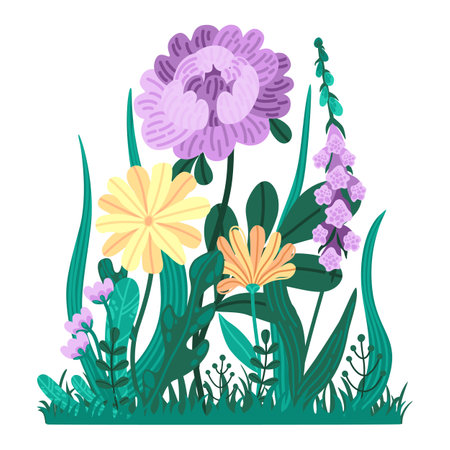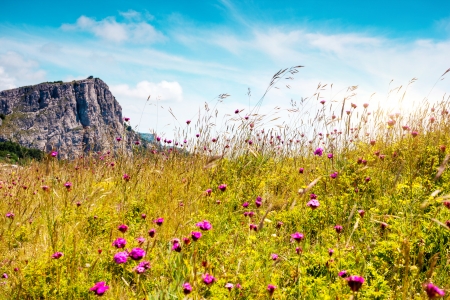Introduction to Seasonal Wildflower Hikes
There’s something truly magical about stepping out into the rolling British countryside as it bursts into life with each passing season. From cheerful bluebells carpeting ancient woodlands in spring, to vibrant poppies dancing in summer meadows, Britain’s wildflowers offer an ever-changing spectacle that delights nature lovers of all ages. Whether you’re a seasoned rambler or just looking for a gentle family outing, wildflower spotting walks are a wonderful way to connect with nature and introduce children to the beauty of our native flora. With a trusty pair of binoculars and a sense of curiosity, you can turn any weekend stroll into a mini adventure, discovering hidden gems right on your doorstep. In this guide, we’ll share some top tips for getting started with seasonal wildflower hikes, making it easy and enjoyable for the whole family to spot British blooms throughout the year.
Essential Kit: Binoculars and Beyond
Setting off on a seasonal wildflower hike in Britain is all about preparation. Our unpredictable weather and varied landscapes mean that packing the right kit can make your adventure comfortable, safe, and much more enjoyable. Here’s a handy guide to what you’ll need, with a special focus on choosing binoculars for spotting those elusive British blooms.
Choosing the Right Binoculars
Binoculars are your best friend when it comes to observing wildflowers without disturbing delicate habitats. For British walks, opt for lightweight, waterproof models with a magnification of 8x or 10x – perfect for close-up views without being too bulky. Look for features such as non-slip grips and fog-proof lenses; these are especially handy on misty mornings or in sudden showers. If children are joining, consider compact binoculars designed for smaller hands.
Packing Essentials for All Weathers
Whether you’re wandering through bluebell woods in spring or exploring heather moorlands in late summer, British weather can change at a moment’s notice. Here’s a quick checklist to help you pack smart:
| Item | Why It’s Essential |
|---|---|
| Waterproof Jacket | Keeps you dry during classic British downpours |
| Sturdy Walking Boots | Protects your feet on uneven, muddy paths |
| Map & Compass (or GPS) | Helps navigate areas with patchy signal |
| Reusable Water Bottle | Staying hydrated is key, even on cooler days |
| Packed Lunch & Snacks | Refuel whilst enjoying floral views |
| Sunscreen & Hat | The sun can be deceptively strong, even under clouds |
| Trouser Gaiters | Handy for wet grass and brambles in meadows and fields |
| Field Guide to British Wildflowers | Makes spotting and identifying blooms fun for all ages |
| Pocket First Aid Kit | Covers minor scrapes from adventurous exploring |
| Rucksack Rain Cover | Keeps your gear dry when the heavens open unexpectedly |
Optional Extras for Family-Friendly Hikes
If you’re heading out with little ones, consider adding a few extras: magnifying glasses for up-close flower investigations, sketchbooks for drawing finds, and a small camera to capture memories. Always remember to check the forecast before you set off—British weather loves surprises!

3. Best Times and Places to See British Wildflowers
One of the true joys of wildflower hiking in the UK is discovering a vibrant patchwork of colours across the countryside, changing beautifully with each season. From beloved bluebell woods to secret meadows, Britain offers a host of breathtaking spots that come alive with flora throughout the year. Here’s when and where to bring your binoculars for the best displays.
Spring: Bluebells and Early Blooms
April and May are renowned for bluebell carpets, turning ancient woodlands into magical seas of violet-blue. West Woods in Wiltshire and Hallerbos Wood in Kent are classic locations, but don’t overlook hidden treasures like Hardcastle Crags in Yorkshire or the serene corners of Beechenhurst in the Forest of Dean. Along with bluebells, look out for primroses and wood anemones brightening woodland floors.
Summer: Meadows Bursting with Colour
June through July is meadow season, when fields shimmer with buttercups, oxeye daisies, and wild orchids. The Cotswolds’ wildflower meadows, especially near Cranham Common, are perfect for family strolls. Meanwhile, Llanbadrig Dunes on Anglesey or Skomer Island in Wales offer coastal views paired with rare blooms like sea campion and thrift—a real treat for nature-lovers!
Autumn: Late Bloomers and Grassy Splendour
As summer fades, autumn (September to October) brings its own charm with late-flowering knapweeds and devil’s-bit scabious painting fields purple. Explore Porthgwarra on the Cornish coast or quieter reserves such as Moor House-Upper Teesdale National Nature Reserve, where the last wildflowers mingle with golden grasses under crisp skies.
Hidden Gems Worth Exploring
If you’re after something off the beaten path, try Lambley Viaduct Meadows in Northumberland or the lesser-known glades around Brockholes Nature Reserve in Lancashire. These quieter spots offer peaceful wanders and a chance to spot unusual species without the crowds—perfect for families and those seeking a more tranquil experience.
A Year-Round Adventure Awaits
No matter the month, there’s always a corner of Britain ready to surprise you with a burst of floral beauty. With your binoculars at hand and walking boots laced up, you’re set for unforgettable moments surrounded by some of the UK’s finest wildflowers—classic vistas and secret hideaways alike.
4. Spotting Iconic British Flora
One of the true joys of a seasonal wildflower hike in Britain is discovering the remarkable variety of native flora. From the towering spires of foxgloves to the delicate yellow faces of cowslips and primroses, there’s so much to admire through your binoculars. Here’s an overview of some of the iconic wildflowers you’re likely to encounter and practical tips for identifying them from a distance.
Common British Wildflowers to Look Out For
| Wildflower | Key Features | Best Season to Spot | Identification Tips with Binoculars |
|---|---|---|---|
| Foxglove (Digitalis purpurea) | Tall spikes with tubular purple-pink flowers; often found on woodland edges and clearings. | Late Spring to Early Summer | Look for clusters of bell-shaped flowers rising above ferns and brambles; their height makes them stand out even at a distance. |
| Cowslip (Primula veris) | Bright yellow, nodding blooms clustered on a single stem; typically seen in meadows and grassy banks. | Spring | The golden-yellow colour is striking among green grass; use your binoculars to spot their distinctive drooping heads. |
| Primrose (Primula vulgaris) | Pale yellow, five-petalled flowers close to the ground with rosettes of crinkled leaves. | Early Spring | Look for low-growing patches of soft yellow along hedgerows and woodland floors; binoculars help distinguish their rounded petals from similar species. |
Tips for Identification Through Binoculars
- Focus on Colour and Shape: Wildflowers like foxgloves and primroses have unique colours and petal shapes that are easy to spot with a steady pair of binoculars.
- Use Low Magnification First: Start with lower magnification for a wider field of view, then zoom in to examine details such as leaf shape or flower arrangement.
- Check Surrounding Habitat: Many native species prefer specific environments—meadows, woodland edges, or riverbanks—which can help narrow down possibilities as you scan the landscape.
- Take Notes or Photos: Jot down details or snap photos through your binoculars (if possible) to compare with guidebooks or online resources later at home.
A Family-Friendly Approach to Flora Spotting
If you’re hiking with children, make it a game: who can find the first cowslip or spot the tallest foxglove? Using binoculars adds excitement and helps everyone learn to appreciate the subtle differences between Britain’s beautiful native wildflowers. With a little patience and curiosity, every walk can become an adventure in botanical discovery!
5. Nature-Friendly Hiking with Kids
Introducing little ones to the wonders of British wildflowers is a brilliant way to nurture their curiosity about nature and the countryside. To keep seasonal wildflower hikes fun and educational for children, it’s helpful to incorporate playful activities and mindful practices throughout your journey.
Make It a Game
Turn your hike into a flower-spotting treasure hunt by giving each child a simple checklist of common blooms for the season—think bluebells in spring or foxgloves in summer. Encourage them to tick off each plant as they spot it through their binoculars, perhaps awarding points or small prizes for rare finds. This gentle competition can make walks more engaging and memorable.
Interactive Flora Guides
Bring along an illustrated British wildflower guidebook or download a family-friendly plant identification app on your phone. Pause when you find something interesting, and let children use binoculars to examine petals, leaves, or seed pods up close. Encourage them to draw what they see in a small notebook or take photos (if allowed) to create their own wildflower diary at home.
Respecting the Countryside
Teach children the importance of the Countryside Code: stick to marked paths, avoid trampling delicate flora, and never pick wildflowers. Remind them that these plants are vital for pollinators and future generations. Carry out any litter you bring and encourage kids to leave the countryside even lovelier than you found it. By blending fun with respect for nature, you’ll help your family develop a lifelong love for Britain’s beautiful wild places—and ensure those wildflowers bloom for years to come.
6. Tips for a Responsible Wildflower Walk
Heading out for a wildflower hike in the UK is a fantastic way to connect with nature, but it’s important to tread lightly and respect our beautiful countryside. Here are some family-friendly tips to ensure your seasonal wildflower adventure leaves only memories and not a mark.
Promote Leave No Trace Principles
The British countryside thrives when we care for it. Always stick to marked footpaths and avoid trampling delicate wildflowers or grasses. Take all your litter home—even biodegradable items like apple cores can disrupt local wildlife. If you bring snacks, reusable containers are a winner for the environment and your picnic basket!
Protect Local Habitats
Britain’s wildflower meadows and hedgerows are vital habitats for pollinators and birds. Teach children not to pick flowers or disturb plants; instead, enjoy them through binoculars and photos. Keep dogs on leads where requested, especially during nesting season, to protect ground-nesting birds and other wildlife.
Participate in Citizen Science Projects
Why not get involved in UK citizen science? Programmes like Plantlife’s Great British Wildflower Hunt or iRecord let families contribute observations that help scientists monitor native flora. It’s an engaging way to learn about British species while supporting conservation efforts.
Embrace UK Outdoor Etiquette
Remember classic countryside codes: close gates behind you, respect private land, and greet fellow walkers with a friendly “hello.” A little courtesy goes a long way in preserving our shared outdoor spaces for future generations of wildflower enthusiasts.
By embracing these simple yet meaningful practices, every wildflower walk becomes an opportunity not only to marvel at Britain’s natural beauty but also to nurture it—so everyone can enjoy those vibrant blooms year after year.


